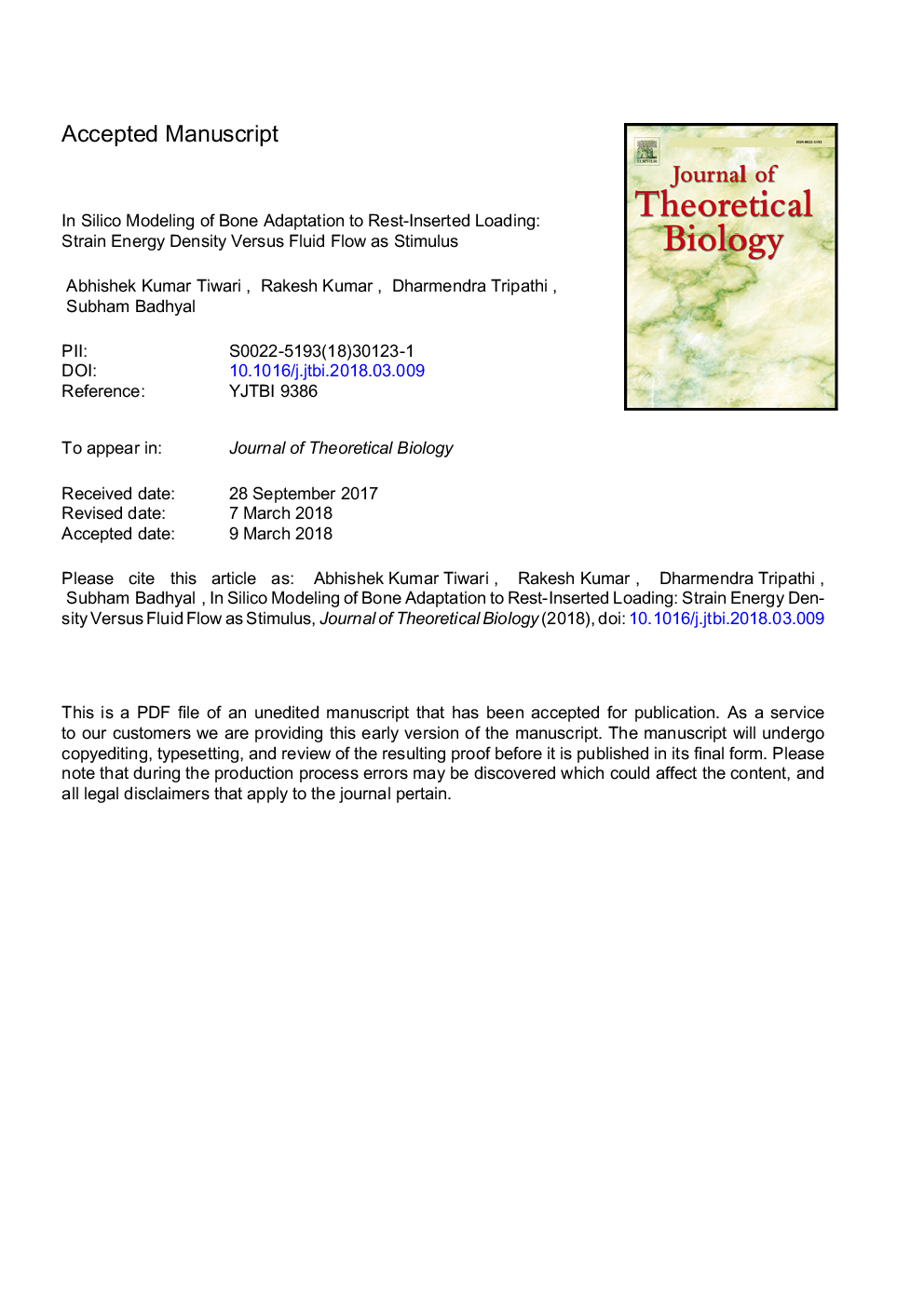| کد مقاله | کد نشریه | سال انتشار | مقاله انگلیسی | نسخه تمام متن |
|---|---|---|---|---|
| 8876732 | 1623764 | 2018 | 44 صفحه PDF | دانلود رایگان |
عنوان انگلیسی مقاله ISI
In silico modeling of bone adaptation to rest-inserted loading: Strain energy density versus fluid flow as stimulus
ترجمه فارسی عنوان
در مدل سازی سیلیکون سازگاری استخوانی با بارگذاری با استقرار: چگالی انرژی کششی در مقایسه با جریان مایع به عنوان
دانلود مقاله + سفارش ترجمه
دانلود مقاله ISI انگلیسی
رایگان برای ایرانیان
کلمات کلیدی
سازگاری با استخوان تراکم انرژی، جریان مایع کانالیکولار، استئوژنیک، سالخورده،
موضوعات مرتبط
علوم زیستی و بیوفناوری
علوم کشاورزی و بیولوژیک
علوم کشاورزی و بیولوژیک (عمومی)
چکیده انگلیسی
In vivo studies suggest that cyclic and low-magnitude loading can be useful over pharmaceutical drugs in normalizing bone loss as it encourages osteogenesis (i.e. new bone formation) at the sites of elevated strain magnitude. In silico models assumed normal strain or strain energy density (SED) as the stimulus to predict loading-induced osteogenesis, however, these models may have limited success in fitting the in vivo new bone formation at several instances. For example, rest-inserted cyclic loading amplifies the new bone formation as compared to continuous-cyclic loading even though similar strain magnitude were induced in both the cases. It is also believed that loading-induced interstitial fluid flow can also be a potential stimulus of osteogenesis. The present study hypothesizes that fluid motion as osteogenic stimulus may explain the afore-mentioned anomalies. Accordingly, this work studies osteogenesis as functions of SED and canalicular fluid motion using an in silico model. Therefore, the new bone formation is considered roughly proportional to stimuli above their osteogenic thresholds. This model attempts to simulate in vivo new bone formation noticed in rest-inserted cantilever loading studies. The model's prediction of site-specific new bone formation improves when fluid flow is considered as the stimulus. It is also noticed that fluid motion as the stimulus closely fits the new bone formation for another in vivo study where the effects of aging on osteogenesis were examined. These attempts to establish fluid flow as a potential osteogenic stimulus can be useful in the prediction of site-specific new bone formation. The findings will ultimately be useful in designing biomechanical interventions such as prophylactic exercises to cure bone loss.
ناشر
Database: Elsevier - ScienceDirect (ساینس دایرکت)
Journal: Journal of Theoretical Biology - Volume 446, 7 June 2018, Pages 110-127
Journal: Journal of Theoretical Biology - Volume 446, 7 June 2018, Pages 110-127
نویسندگان
Abhishek Kumar Tiwari, Rakesh Kumar, Dharmendra Tripathi, Subham Badhyal,
